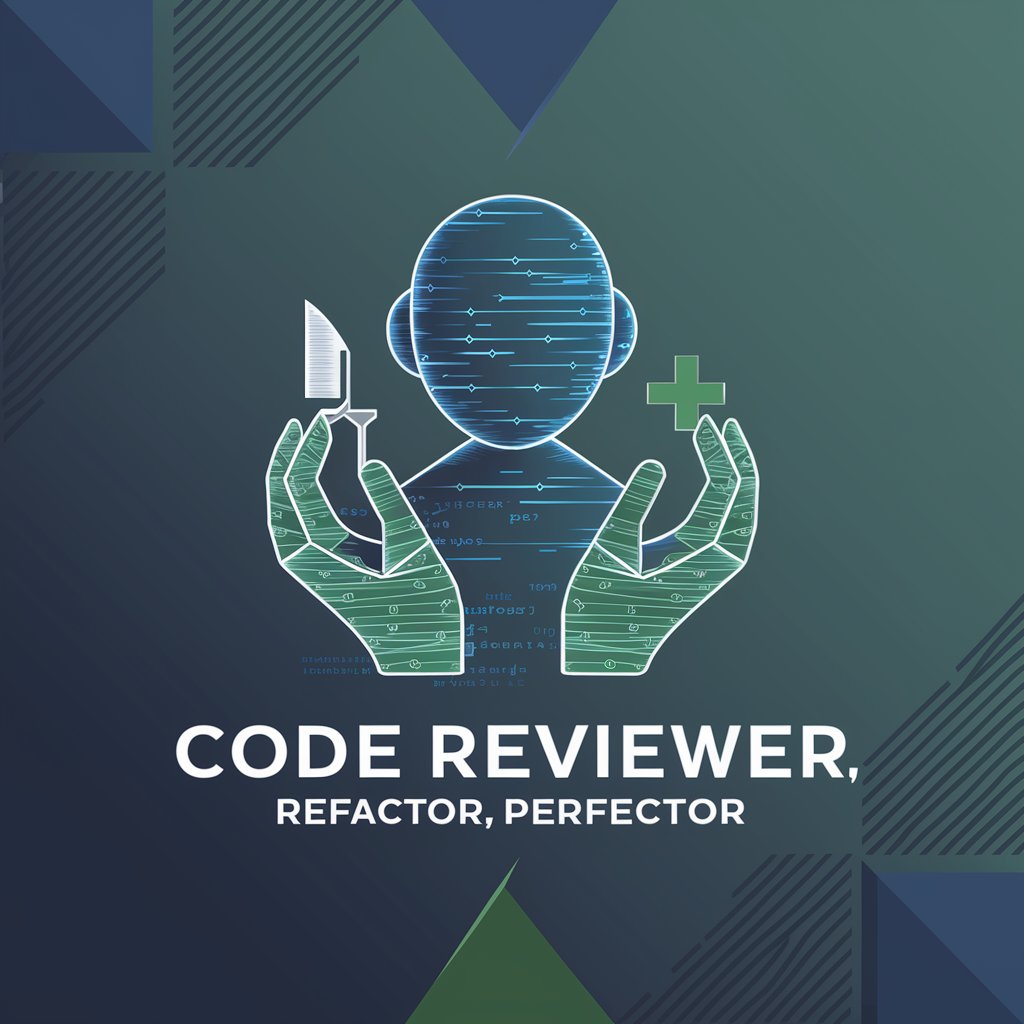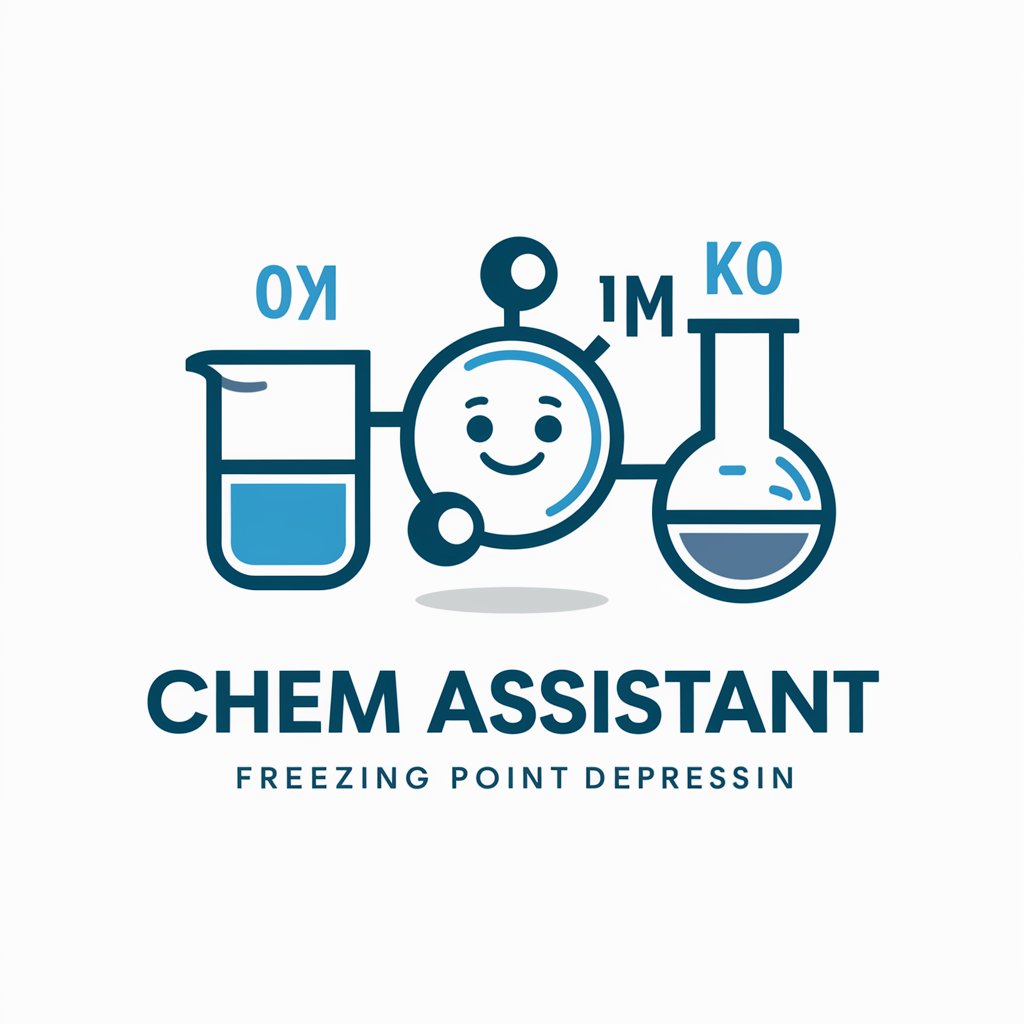Code reviewer, refactor, perfector - AI-Powered Code Enhancements

Welcome to the ultimate AI-driven code review experience.
Refine your code with AI-driven insights.
Review the following code for errors and improvements:
Optimize the performance of this algorithm:
Enhance the readability and maintainability of this function:
Analyze and refactor the following code segment:
Get Embed Code
Introduction to Code Reviewer, Refactor, and Perfector
Code reviewer, refactor, and perfector tools are essential components in the software development lifecycle, designed to improve code quality, maintainability, and performance. A code reviewer automates the process of code inspection, highlighting potential issues like bugs, vulnerabilities, or coding standard violations. Refactoring tools help in restructuring existing computer code without changing its external behavior, enhancing its readability and reducing complexity. Perfector tools, often part of the refactoring and reviewing processes, focus on optimizing code for better performance by identifying inefficient code paths, memory leaks, and other potential bottlenecks. For example, consider a scenario where a developer writes a function that retrieves user data from a database. The code reviewer might flag a potential SQL injection vulnerability, the refactoring tool could suggest ways to simplify the function's logic for better readability, and the perfector could highlight unnecessary database queries that could be optimized. Powered by ChatGPT-4o。

Main Functions of Code Reviewer, Refactor, and Perfector
Automated Code Review
Example
Identifying potential security vulnerabilities or anti-patterns in a pull request.
Scenario
A developer submits a pull request to add a new feature. The code reviewer tool automatically scans the changes and flags a piece of code that potentially exposes the application to an SQL injection attack, prompting the developer to make necessary changes before merging.
Code Refactoring
Example
Simplifying complex code structures without altering their functionality.
Scenario
During code review, a refactoring tool suggests modifying a nested if-else statement into a more readable switch-case statement or using design patterns to better organize the code, making it easier for other team members to understand and maintain.
Performance Optimization
Example
Identifying and optimizing slow code paths to improve application speed.
Scenario
A perfector tool analyzes the application's performance profile and identifies a loop that could be optimized by using a more efficient data structure, leading to significant performance improvements in data processing times.
Ideal Users of Code Reviewer, Refactor, and Perfector Services
Software Developers
Individuals or teams looking to enhance code quality, ensure adherence to coding standards, and maintain a high level of software maintainability. They benefit from these tools by automating routine checks, receiving suggestions for code improvements, and thus focusing more on problem-solving and feature development.
Project Managers and Team Leads
Professionals responsible for overseeing project timelines and deliverables. They utilize these tools to monitor code quality across the project, ensuring that the codebase remains clean, well-documented, and easy to maintain, which is crucial for timely delivery and long-term project success.
Quality Assurance Engineers
Specialists focused on identifying bugs and ensuring the software meets quality standards. By integrating these tools into their workflow, they can more effectively identify potential issues early in the development process, reducing the time and resources spent on manual testing and debugging.

Using Code Reviewer, Refactor, Perfector
Initial Visit
Head over to yeschat.ai for a hassle-free trial; no login or ChatGPT Plus required.
Upload Code
Submit your code directly on the platform. Ensure it's clear and well-documented for a more accurate review.
Select Service
Choose between Code Reviewer, Refactor, or Perfector based on your specific needs.
Review Suggestions
Examine the AI's feedback or changes. It will provide insights on code quality, potential refactors, or optimizations.
Apply Changes
Manually apply the suggested changes to your codebase. Test thoroughly to ensure functionality remains intact.
Try other advanced and practical GPTs
Chem Assistant
AI-driven Chemistry Insights

CreativityOne
Ignite Your Creativity with AI

The Mom Test
Turn conversations into solutions

英日翻訳チャット 「ちょっと訳して」
Seamless AI-powered English to Japanese translations

プレスリリース代筆
Craft compelling press releases with AI

Honoka
Empower your conversations with AI!

Profit for Good Helper
Empower Charity with Every Purchase

Almond (Concise GPT with in-depth mode)
Unlock deep insights with AI-powered Almond

AMZ Seller Assistant
Optimize Your Amazon Success with AI

Tsundere GPT
Chat with a twist: AI-powered tsundere interactions.

Sales Email Personalisation
Empathetic, AI-driven Email Engagement

Talk To Me In Korean
Speak Korean naturally with AI

Q&A about Code Reviewer, Refactor, Perfector
What is the difference between Code Reviewer, Refactor, and Perfector?
Code Reviewer analyzes your code for quality and maintainability, Refactor suggests improvements for code structure and design, and Perfector focuses on optimizing performance and efficiency.
How does the AI ensure its suggestions are reliable?
The AI analyzes countless codebases to learn optimal coding practices and applies this knowledge, ensuring suggestions are based on industry standards and best practices.
Can I use these tools for any programming language?
While these tools are versatile, their effectiveness might vary depending on the programming language and the current support for that language's syntax and idioms.
How do I know if the changes made by the tool need further adjustment?
After applying changes, it's crucial to review the modifications and conduct thorough testing. The AI provides a good starting point, but context-specific adjustments may be necessary.
Is there support for collaborative projects?
Yes, these tools can be used in a team setting to streamline code reviews and maintain coding standards across collaborative projects.
